Hardtail mountain bikes offer a unique riding experience, blending simplicity, efficiency, and a direct connection to the trail. In a market often dominated by full-suspension rigs, hardtails remain a popular choice for riders of all levels. They are not only more affordable and require less maintenance, but they also hone essential riding skills and provide a thrillingly raw feel on the trails. Whether you’re a beginner looking to learn the ropes, a seasoned rider seeking a second bike for specific conditions, or someone who appreciates the purity of a hardtail, there’s a model out there for you. This guide dives into some of the Best Hardtail Mountain Bikes currently available, highlighting their strengths and helping you determine if a hardtail is the right choice for your riding style and terrain.
Commencal Meta HT AM Essential – Best All-Around Hardtail
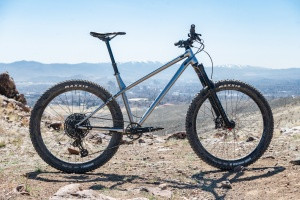 commencal meta ht am essential
commencal meta ht am essential
The Commencal Meta HT AM Essential stands out as an exceptionally versatile and fun-to-ride hardtail. It impressed us immensely during testing, proving to be a blast across a wide spectrum of riding situations. Designed around 27.5+ inch wheels, with the option to run as a mullet setup or full 29er, the Meta HT AM is built to tackle aggressive terrain with confidence. Its playful nature shines through, encouraging riders to get airborne, manual through trail features, and carve corners with enthusiasm.
The geometry strikes a sweet spot, being aggressive enough to ensure stability at high speeds and inspire confidence on challenging trails, yet not so extreme that it becomes unwieldy at slower speeds or in tighter, more technical sections. The 27.5-inch wheels and balanced reach and wheelbase contribute to the bike’s eagerness to pop off the ground and maintain maneuverability. Climbing is also surprisingly efficient and comfortable, motivating riders to power up ascents. Commencal’s direct-to-consumer model delivers exceptional value, and the Essential build we tested outperforms many competitors in its price bracket.
However, the Meta HT AM, with its plus-sized tires and relatively slack front end, isn’t designed to be the most efficient or fastest hardtail on flat, mellow trails. The large tires provide a comfortable, damped ride feel, but they do sacrifice some rolling speed, which can make it feel less engaging on smoother terrain. Yet, this bike isn’t intended for XC racing; it’s built for fun and aggressive trail riding. We were genuinely impressed by the Meta HT AM and believe it would be a fantastic addition to any rider’s bike collection or serve as a reliable and low-maintenance daily rider. The availability of Mullet wheel packages from Commencal further enhances its versatility, especially for riders looking for improved rollover capability with a 29-inch front wheel.
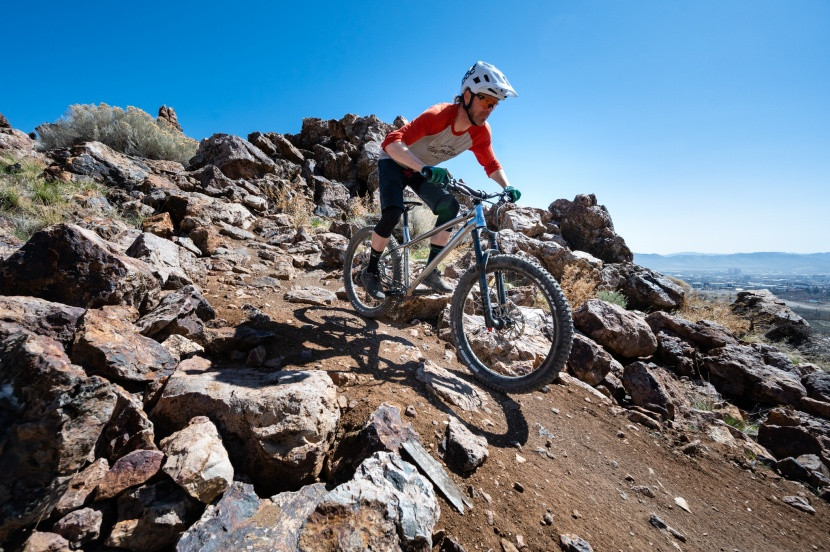 Rider navigating rocky terrain on a Commencal Meta HT AM hardtail mountain bike, showcasing its aggressive trail capabilities.
Rider navigating rocky terrain on a Commencal Meta HT AM hardtail mountain bike, showcasing its aggressive trail capabilities.
We pushed the Meta HT into terrain typically reserved for full-suspension bikes, and it handled admirably.
Ibis DV9 NX – Best Hardtail for Trail and Cross Country Blend
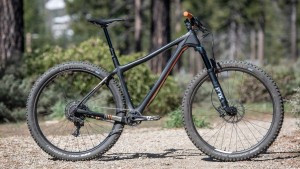 ibis dv9 nx
ibis dv9 nx
The Ibis DV9 NX is a lightweight marvel, perfectly blending trail riding capabilities with cross-country efficiency. It’s equally at home shredding singletrack and lining up for a cross-country race. The DV9 features a relatively upright, cross-country focused geometry that prioritizes pedaling efficiency and sharp handling over outright downhill aggression. This design philosophy results in exceptional climbing prowess, rapid acceleration, and incredibly responsive steering. The NX build we tested offers great value, with Ibis smartly investing in key components like a quality fork, tires, wheels, and a dropper post, all enhancing its overall performance. For riders seeking a versatile hardtail that excels on smooth and flowing trails, the DV9 is an outstanding choice.
The tradeoff for its XC focus is that the DV9 isn’t the most forgiving on rough or heavily chattered trails. The stiff, lightweight carbon fiber frame, while contributing to its responsiveness and climbing ability, transmits more trail feedback to the rider. When riding over very choppy terrain, this stiffness becomes noticeable. Therefore, the DV9 is best suited for experienced riders who can utilize proper riding technique, employing bent elbows and knees to absorb impacts and maintain control on descents.
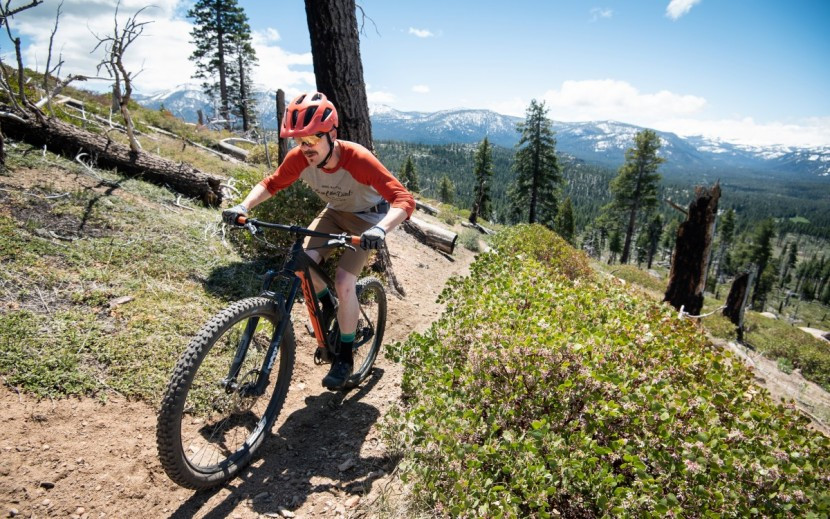 Ibis DV9 NX hardtail mountain bike speeding through a winding trail, highlighting its speed and efficiency.
Ibis DV9 NX hardtail mountain bike speeding through a winding trail, highlighting its speed and efficiency.
The DV9 is incredibly efficient and fast, excelling in climbing and holding its own on descents.
Rocky Mountain Growler 50 – Best Aggressive Hardtail
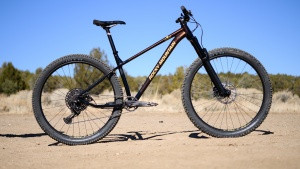 rocky mountain growler 50
rocky mountain growler 50
The Rocky Mountain Growler 50 is built for speed and demanding terrain. This hardtail boasts super-aggressive geometry, typically found on full-suspension enduro bikes, making it a standout in its category. This long and slack bike is remarkably stable at high speeds and offers exceptional confidence on steep descents. The Growler rewards an aggressive riding style and, despite its extended wheelbase, feels surprisingly agile when launching off jumps and rollers. The robust 2.6-inch WTB tires complement the build kit, reinforcing the bike’s hard-charging character. Climbing on mellow and smooth ascents is surprisingly comfortable thanks to a steep seat tube angle that positions the rider efficiently over the pedals. If your riding preference leans towards pushing limits and riding fast, the Growler is an excellent choice.
However, the Growler does have some limitations. Technical climbing can be challenging due to the combination of a long wheelbase and slack front end, making tight maneuvers difficult. Even on descents, tight corners and awkward trail features can feel more challenging compared to shorter, steeper bikes. The build kit also presented some minor issues during our testing, including a dropper post malfunction, which was promptly addressed under warranty, and slightly underpowered brakes for the bike’s aggressive nature. Despite these minor drawbacks, the Growler’s ability to handle aggressive riding is undeniable.
 Rocky Mountain Growler 50 hardtail mountain bike on a steep, technical descent, emphasizing its aggressive enduro-style geometry.
Rocky Mountain Growler 50 hardtail mountain bike on a steep, technical descent, emphasizing its aggressive enduro-style geometry.
The Growler’s geometry is designed for enduro-style riding, making it a highly capable descender for a hardtail.
Marin Pine Mountain 2 – Best Hardtail for Versatility and Adventure
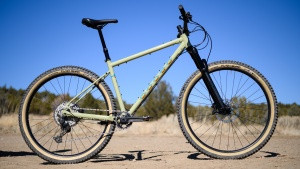 marin pine mountain 2
marin pine mountain 2
The Marin Pine Mountain 2 is a highly versatile steel hardtail designed to handle a wide range of riding disciplines, with a particular focus on bikepacking and adventure. It is evident that bikepacking was a key consideration in its design, featuring numerous frame mounts and a comfortable, compliant ride quality thanks to its steel frame construction. The pedaling position is efficient, making the Pine Mountain a surprisingly capable climber. While adventure riding is its primary focus, it performs admirably on typical trail rides as well. The well-balanced geometry avoids extremes, making it neither too slack nor too steep, resulting in confident descending, good cornering, and efficient climbing. The build kit is impressive for the price, featuring highlights like a Shimano SLX 12-speed drivetrain and powerful 4-piston brakes.
While the Marin Pine Mountain excels as an adventure and bikepacking bike, it’s important to note that there are more specialized hardtails better suited for dedicated trail riding. As a pure trail bike, the Pine Mountain can feel somewhat subdued and doesn’t particularly excel in any single area. Its strength lies in its overall versatility and robust build, rather than outright trail performance.
 Marin Pine Mountain 2 steel hardtail mountain bike on a winding forest trail, highlighting its comfortable steel frame.
Marin Pine Mountain 2 steel hardtail mountain bike on a winding forest trail, highlighting its comfortable steel frame.
The steel frame of the Pine Mountain effectively absorbs trail vibrations, providing a smoother ride on rough terrain. Steel is indeed real.
Hardtail Mountain Bikes: A Comprehensive Comparison
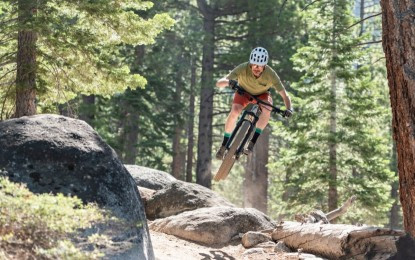 Hardtail mountain bikes lined up, showcasing the variety of models available and their appeal for different riders.
Hardtail mountain bikes lined up, showcasing the variety of models available and their appeal for different riders.
Hardtails might not be for every rider, but modern designs offer a level of fun and performance that rivals full-suspension bikes on suitable terrain. The Specialized Fuse 29, pictured, was a tester favorite.
Why Choose a Hardtail Mountain Bike? Is it Right for You?
Mountain bikes can represent a significant investment, with prices often escalating rapidly as technology advances. Hardtail mountain bikes offer a compelling alternative, primarily due to their more accessible price points. The absence of a rear suspension system not only reduces manufacturing costs but also simplifies maintenance.
Hardtails are excellent tools for skill development, particularly for newer riders. They demand active riding technique, forcing riders to use their body to absorb impacts and maintain balance over rough terrain. This direct feedback enhances trail awareness and refines riding skills. Furthermore, hardtails serve as dependable second bikes for full-suspension owners, ideal for wet, muddy conditions or when a simpler, more robust bike is preferred.
However, hardtails do have limitations. They are less forgiving on very rough trails and can be less comfortable over long distances compared to full-suspension bikes. The lack of rear suspension means more trail vibrations are transmitted directly to the rider.
Entry-level full-suspension bikes typically start around $2,000, with well-equipped models often exceeding $3,000. Full-suspension bikes, while offering superior performance on a wider range of trails, also require more maintenance. The bearings and pivots in the suspension linkage need regular servicing to ensure smooth and quiet operation, which can add to the overall cost of ownership. The significant advantages of full-suspension bikes include enhanced climbing traction, superior descending capabilities, and greater comfort over long rides. Riders planning to engage in mountain biking seriously and frequently often find the investment in full suspension worthwhile.
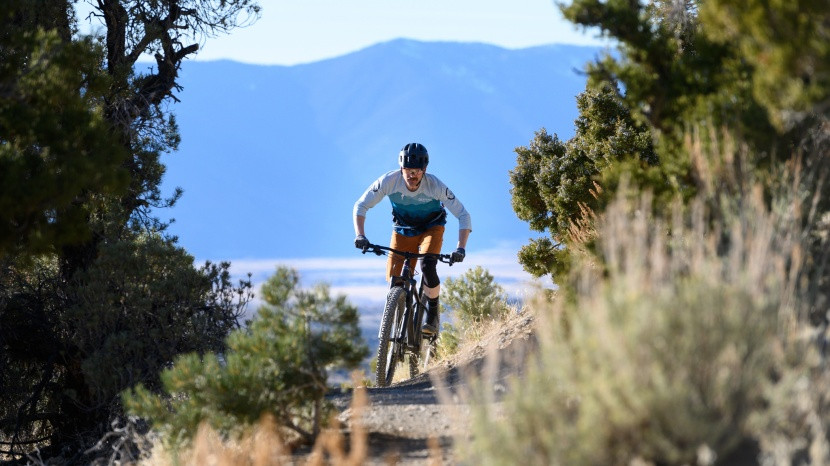 Rider on a smooth, buffed trail on a hardtail mountain bike, illustrating ideal terrain for hardtail performance.
Rider on a smooth, buffed trail on a hardtail mountain bike, illustrating ideal terrain for hardtail performance.
If your local trails are smooth and flowy like this, a hardtail is definitely a viable and enjoyable option.
Deciding between a hardtail and full-suspension bike depends largely on your riding goals and typical terrain. If you primarily ride mellow trails with few technical features and seek relaxed weekly rides, a hardtail is a solid and cost-effective choice. Beginners looking to develop fundamental skills also benefit greatly from hardtails. However, if you aim to ride a wider variety of trails, including rougher and more technical terrain, and plan to ride frequently and progress your skills, a full-suspension bike is often the more suitable option for maximizing enjoyment and performance.
Some riders simply prefer the inherent simplicity and efficiency of hardtails. They have fewer moving parts, are often lighter, and eliminate energy loss through suspension movement. The added challenge of riding without rear suspension can also be appealing. Ultimately, the best choice is a matter of personal preference. Whether you are new to mountain biking or have years of experience, the diverse range of modern hardtail mountain bikes ensures there’s a model to match every rider’s needs and budget.
 Commencal Meta HT AM hardtail mountain bike parked on a trail, highlighting its consumer-direct value and quality build.
Commencal Meta HT AM hardtail mountain bike parked on a trail, highlighting its consumer-direct value and quality build.
While less expensive bikes exist, the consumer-direct Commencal Meta HT AM offers exceptional value with a great component package for its price.
Best Value Hardtail Mountain Bikes
For riders conscious of budget, hardtail mountain bikes generally offer excellent value compared to full-suspension models. While our reviews don’t directly rank bikes based on price, we appreciate exceptional value. The Commencal Meta HT AM Essential exemplifies outstanding value, offering a high-quality build kit at a competitive price, largely thanks to Commencal’s direct-to-consumer sales model. Remember that most bike models are available in various build configurations, allowing riders to adjust their spending based on component level and features.
Key Considerations When Choosing a Hardtail Mountain Bike
Several factors should influence your choice when selecting the best hardtail mountain bike for your needs.
Wheel Size
Modern hardtails typically come with one of four common wheel sizes, each with distinct characteristics:
- 27.5-inch Wheels: Ideal for riders prioritizing agility and playfulness. These smaller wheels offer quick acceleration, nimble handling, and a more playful ride feel. They can be particularly well-suited for smaller riders or experienced riders who value maneuverability and responsiveness.
 27.5 inch plus tires on a hardtail mountain bike, emphasizing the playful and nimble characteristics of this wheel size.
27.5 inch plus tires on a hardtail mountain bike, emphasizing the playful and nimble characteristics of this wheel size.
The 27.5″+ tires on the Salsa Timberjack highlight the enhanced traction and playful nature of this wheel size.
-
29-inch Wheels: Best for maximizing speed and efficiency. These larger diameter wheels roll faster, maintain momentum more effectively, and navigate obstacles more easily. They offer superior rollover capability and are ideal for covering ground quickly. The trade-off is slightly reduced agility compared to 27.5-inch wheels. These are the preferred choice for riders focused on speed and distance.
-
27.5+ Wheels: These wheels combine 27.5-inch diameter with wider tires (2.8″ or 3.0″). They deliver significantly enhanced traction and allow for lower tire pressures, adding a degree of cushioning and damping to the ride, which is especially beneficial on a hardtail.
-
29+ Wheels: Featuring 29-inch diameter and even wider tires (2.8″ or 3.0″), 29+ wheels offer exceptional stability and very fast rolling capabilities. They excel in exploration and bikepacking scenarios. However, their large mass can make acceleration slower, and they can feel less nimble in tight, technical terrain. Playfulness is generally reduced with this wheel size.
It’s important to note that tire choice within a wheel size significantly impacts ride feel. For example, a 29 x 2.3-inch tire will behave differently than a 29 x 2.6-inch tire. Wider tires generally provide a more aggressive feel and enhanced damping.
 Wide, beefy tires on a hardtail mountain bike, illustrating the enhanced traction and damping they provide.
Wide, beefy tires on a hardtail mountain bike, illustrating the enhanced traction and damping they provide.
Larger volume tires significantly improve a hardtail’s ride quality by allowing lower pressures for better traction and increased damping.
Frame Material: Carbon Fiber, Aluminum, or Steel
Frame material is a crucial factor influencing performance, ride quality, and price. Your budget will often guide your material choice, but understanding the characteristics of each is essential:
- Carbon Fiber: Offers the lightest weight, highest stiffness, and greatest strength. It’s also typically the most expensive material. Carbon fiber frames maximize power transfer and responsiveness. While incredibly strong, carbon fiber is more susceptible to damage from direct impacts with rocks and is not recyclable.
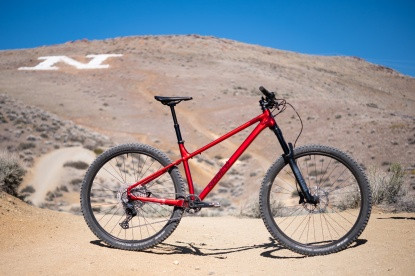 Carbon fiber frame hardtail mountain bike with a vibrant red paint job, highlighting the lightweight and stiff properties of carbon.
Carbon fiber frame hardtail mountain bike with a vibrant red paint job, highlighting the lightweight and stiff properties of carbon.
The Norco Torrent A1 features a stiff aluminum frame with a striking red finish.
-
Aluminum: A reliable and more affordable material compared to carbon fiber. While not as stiff as carbon, aluminum is more durable against rock strikes and offers a degree of frame flex, which can improve ride comfort on a hardtail by absorbing some trail vibrations. Aluminum is also readily recyclable.
-
Steel: Often used by smaller manufacturers, steel frames are less stiff than carbon or aluminum, resulting in more frame flex. This flex, however, provides a more damped and comfortable ride quality. Steel is also repairable, making it a durable and long-lasting option.
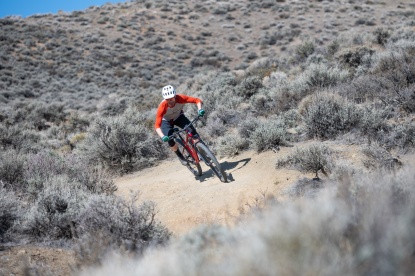 Hardtail mountain bikes with enduro-style geometry, emphasizing frame design and its impact on descending performance.
Hardtail mountain bikes with enduro-style geometry, emphasizing frame design and its impact on descending performance.
Bikes like the Norco Torrent (pictured) and the Rocky Mountain Growler feature enduro-inspired geometry for enhanced descending capabilities.
Geometry
Geometry plays a pivotal role in a hardtail’s handling and ride characteristics. While hardtails were traditionally associated with more conservative, old-school geometry, modern designs are evolving rapidly, offering a wider range of styles than ever before. Brands are increasingly diversifying geometry to cater to different riding preferences. While all hardtails are inherently efficient climbers due to the lack of rear suspension, geometry variations impact uphill handling, particularly wheelbase, reach, and head tube angle.
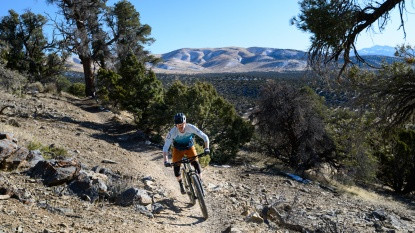 Hardtail mountain bikes in various styles, showcasing the diverse geometry options available for different riding disciplines.
Hardtail mountain bikes in various styles, showcasing the diverse geometry options available for different riding disciplines.
Hardtails are available in a wide array of styles. Bikes like the Marin Pine Mountain are designed for bikepacking and everyday trail riding versatility.
Modern hardtail geometry ranges from quick-handling, moderately aggressive models like the Ibis DV9, ideal for cross-country and trail riding, to more versatile options like the Commencal Meta HT, which balances agility with stability. Bikes like the Marin Pine Mountain offer more conservative geometry, better suited for less aggressive trail riding and adventure/bikepacking.
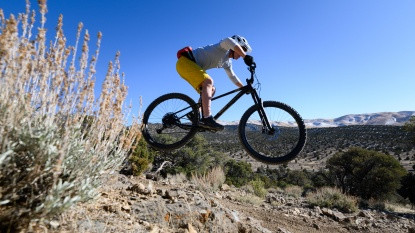 Geometry comparison of hardtail mountain bikes, highlighting the differences between enduro-focused and more conservative designs.
Geometry comparison of hardtail mountain bikes, highlighting the differences between enduro-focused and more conservative designs.
Geometry is critical. Some hardtails, like the Rocky Mountain Growler, feature slack angles similar to enduro bikes, while others are more traditionally conservative.
At the aggressive end of the spectrum are “hardcore hardtails” from brands like Rocky Mountain and Norco, featuring long and slack geometry with head tube angles around 64 degrees, long reach, and wheelbase measurements. These bikes excel at high speeds and on steep, rough descents. The Commencal Meta HT AM also leans towards this aggressive style with a slack head angle and a 160mm fork, yet maintains maneuverability for all-around trail fun.
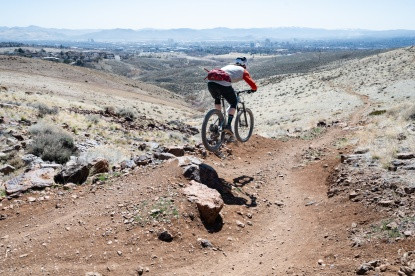 OutdoorGearLab testers riding hardtail mountain bikes, emphasizing the fun and engaging experience they offer on trails.
OutdoorGearLab testers riding hardtail mountain bikes, emphasizing the fun and engaging experience they offer on trails.
At OutdoorGearLab, we appreciate testing hardtails. These bikes offer a unique trail riding experience and can be just as fun, or even more so for some, than full-suspension counterparts.
Conclusion: Finding Your Best Hardtail Mountain Bike
Hardtail mountain bikes offer a compelling blend of simplicity, affordability, and trail engagement. They are excellent tools for skill development, require less maintenance than full-suspension bikes, and provide a direct and thrilling connection to the trail.
Our top pick for the best all-around hardtail is the Commencal Meta HT AM. It delivers exceptional fun and balanced performance across various terrains. For riders prioritizing lightweight efficiency, the Ibis DV9 is a standout choice, excelling in climbing and offering sharp handling. The Rocky Mountain Growler dominates descents with its aggressive geometry and high-speed stability. For riders seeking versatility and adventure, the Marin Pine Mountain 2 is an excellent option, equally capable on trails and bikepacking expeditions.
Ultimately, the best hardtail mountain bike for you will depend on your individual riding style, terrain preferences, and budget. Consider your priorities, explore the options, and get ready to experience the unique joys of hardtail riding.
